Is your Great Dane not eating enough? This can be concerning and it’s a popular topic in the Great Dane community! There are various reasons why a Great Dane might become picky or stop eating, ranging from temporary issues like stress, changes in the environment, or minor digestive upsets, to more serious health conditions such as dental problems, gastrointestinal disorders, or metabolic issues.
Before we dig more into this, I have to remind readers that if a dog is truly not eating and is losing weight, this is considered a medical emergency. Always see your veterinarian if you are worried about your Great Dane not eating enough, or not eating at all.

Great Dane Not Eating Enough…or At All!
Buckle up, this is a big one! If your Great Dane is picky, acting strange, or just not eating much, the answers are here for you. There are times when a loss of appetite can absolutely be a concern.
Here is a list of reasons why a dog won’t eat, that require veterinary care ASAP. If any of these could be true for your dog, do not read the rest of this article, call your veterinarian or if life-threatening, GO!
- Obstruction (socks, bones, chews, balls, toys, rope, etc.)
- Parasites & worms
- The dog is in a lot of pain
- The dog needs dental care
- Anxiety (if it results in withholding food for more than 24 hours)
- Bloat or other gastro-based emergency
- Cancer
Here are some less serious reasons why your Great Dane isn’t eating enough:
- Tummy upset
- They are eating enough, you just think they need more (common!)
- They just finished a growth spurt
- It’s hot out and their appetite is down
- Anxiety & stress
- They are not receiving as much exercise as usual
- The feeding area is dirty, noisy, or scary
- The food is bad (read about the recent Victor recall, they had been selling contaminated food for months and many dogs had refused to eat it before the recall was finally issued)
- They are receiving too many toppers, treats, and chews
Notice I didn’t mention picky eating! We’ll get more into that later.
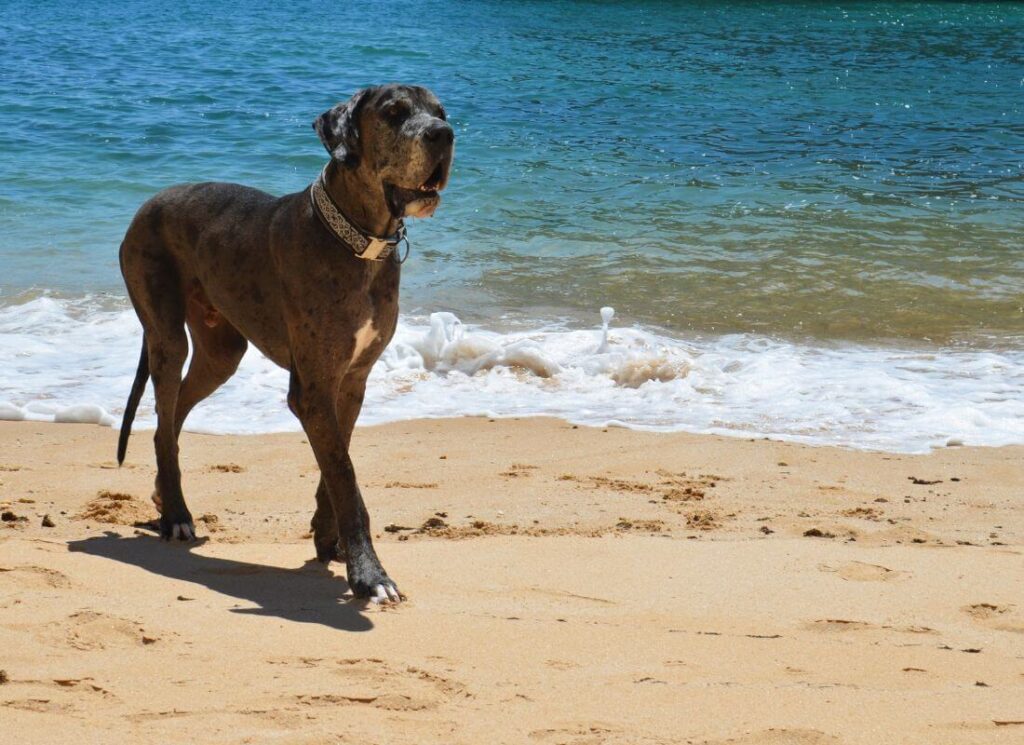
What to do if a new Great Dane puppy won’t eat
It can be alarming if your new Great Dane puppy won’t eat! We all know that Dane pups NEED a lot of food to grow, so it can be scary when they aren’t ravenous for their food.
Great Dane puppies grow fast and a loss of appetite can be alarming, but keep this in mind: for growing large breed dogs, overnutrition is just as dangerous as undernutrition! Overfeeding Great Dane puppies leads to orthopedic growth disorders, too fast growth, and problems such as carpal laxity that are hard on the joints.
Always go by your veterinarian’s advice regarding overall body condition; Dane puppies should be lean, not round.
What if my Great Dane Puppy is a picky eater?
You’ll notice that ‘picky’ is not listed here as one of the reasons why a puppy dog won’t eat! Many people believe that they have a picky dog on their hands, but it’s actually very rare.
Picky eaters are most often a symptom of the environment, and the harsh, honest truth here is that your picky pooch has likely trained YOU!
Every time you add a topper, canned food, boiled chicken, table scraps, or dog treats to encourage eating, your Great Dane puppy learns that if they ignore their food better things will come.
Most dogs are very smart this way, and the only way to solve this problem is to be strong. Our Stop Picky Eating post is super helpful for picky pups!
Stop bribing your puppy
To put this simply, stop bribing your dog to eat unless your veterinarian has encouraged you to do so following an illness! Your puppy will not allow itself to starve to death, and will eventually eat the dog food that was presented to them as-is.
Every time you switch foods to try and appease your ‘picky pup’, you also risk upsetting the stomach more. Many people start to believe that the resulting chronic loose stools are ‘allergies’, change foods again, and thus will begin a never-ending cycle of gut issues.
These problems can be brought on by constant changes to food and nutrition while the puppies’ digestive system was still maturing.
When you switch foods, the balance of nutrition and gut flora is thrown off again; it can take up to 12 weeks for a dog to acclimate to a new food. Every time you find your dog not eating the way that you think he should, we encourage you to look at health first before making changes.
We cannot state this enough: if you are feeding an appropriate, science-based large breed kibble and your puppy is not knuckling or experiencing growth disorders, STICK WITH IT!
Stop switching foods. It’s really not healthy.
What to feed a Great Dane puppy so that they eat
The best dog foods for a Great Dane puppy will be science-backed, highly researched, formulated for the growth of large and/or giant breed dogs, and from a company that employs a veterinary nutritionist (or team of them) to formulate, oversee, research and test the diet.
Many boutique food brands that sound ‘healthy and holistic’ are often the creation of great marketing, not necessarily of great research and excellent nutrition.
We recommend checking the credentials of any food brand you are considering as your pup’s main diet. The wrong food can cause heart problems, kidney problems, issues with vitamin and mineral levels and more.
Thankfully, the Pet Nutrition Alliance did the work for us and compiled the important information on each brand on a spreadsheet. This makes dog food brand decisions super easy!
We recommend a Large Breed Puppy formula from Purina Pro Plan or Eukanuba, and as above, STICK WITH IT! For more information on how to feed a Great Dane and the best dog dry food and amounts for growing Dane pups, read our famous Ultimate Great Dane feeding chart post here!
Here are our favorite science-backed foods for Great Dane Puppies. Click to shop on Chewy. Pro tip: autoship saves you money and time!
- Purina Pro Plan Large Breed Puppy – any flavor!
- Purina Pro Plan Sensitive Skin & Stomach Large Breed puppy – TOP PICK, salmon-based
- Eukanuba Large Breed Puppy (Great for active and sporting dogs)
- Purina One Large Breed Puppy (Excellent budget option)
- Hill’s Science Diet Puppy Large Breed
- Royal Canin Giant Puppy Dry Dog food (to age 12 months) – TOP PICK, PREMIUM OPTION
- Royal Canin Giant Junior Dry Dog food (8-24 months)
- Purina Large Breed Puppy Chow
Check out THE GIANT DOG FOOD PROJECT to compare brands and values.
Your puppy is overwhelmed, fearful, or scared
It’s not uncommon for Great Dane puppies to feel a little overwhelmed during the first days in a new home. An overwhelmed, overtired, and overexcited dog won’t eat reliably, and that’s ok.
Not only have there been several changes to their life and routine, but they’ve likely had vaccines and possibly even ear cropping. Veterinary care like this can make them feel a little icky for a few days, so you may just need to be patient.
Your puppy has parasites
As above, worming medication can cause tummy upset, and so can parasites!
Your veterinarian will likely do a stool sample and worm your puppy with an oral medication. If your puppy has worms, this medication can make your puppy feel not-so-great while the worms die.
Common worms and parasites include tapeworms and roundworms, which you may see in their stool! There is another very tiny parasite called giardia that is a very common cause of loose stools in Great Danes.
If you are struggling with your puppy’s stomach upset, ask your veterinarian to test for Giardia, which requires antibiotics to treat.
Parasites are very common in puppies and treatable. As long as you have gotten your puppy from a reputable Great Dane breeder and had your first vet visit, this should be no big deal.
Your puppy has a stomach upset
Another common cause of stomach upset in Great Dane puppies is switching foods! Many pet parents are excited to switch foods and may immediately jump to a food brand that the puppy had never had before.
We ONLY recommend that puppies be fed a science-based and highly researched large breed puppy kibble diet formulated for large and giant breed growth (our favorites are below).
If your breeder was feeding something else, switch slowly to avoid further stomach upset.
Note: If your puppy is knuckling or experiencing HOD, Panosteitis or other orthopedic growth problems, your puppy must switch to an appropriate, science-backed large breed puppy kibble immediately.
Too many treats can make a dog eat less
Training treats can also cause a puppy to become full or overloaded with the wrong nutrition! Too much of a good thing can result in a decreased appetite, which can be alarming AND lead to loose stools, growth disorders, and more.
Take it easy with dog treats. Keep bites teeny tiny and consider doing as much training as you can with your puppy’s kibble, instead!
(No, your dog will not bloat if you feed them kibble for training! Contrary to popular belief, ‘resting’ before and after eating is not reliable for preventing bloat in Great Danes).
Too many training treats can also throw off the important balance of nutrition needed for proper growth. Too much food, fat, nutrition, and unbalanced amino acids and calcium and phosphorus levels are dangerous for growing puppies.
Here are some of our favorite holistic whole-food training treats for Great Danes. Use in moderation!
Your puppy is sick
Unfortunately, illness can be devastating for young Great Dane puppies. If your Dane pup has any of the following symptoms, seek veterinary care immediately:
- Excessive amounts of diarrhea
- Blood in stool
- Pale gums
- Vomiting
- Low or high body temperature (use this thermometer to check)
- Lethargy (no energy, even while awake)
- Weakness, stumbling, unable to stand, walk or play
- Cloudy or watery eyes
- Discharge from the nose or mouth
- Foul smell
- Large, distended abdomen
- Crooked paws
- Showing pain signals including limping, whining, crying, chewing paws, aggression, etc.
Parvo in Great Dane Puppies
Parvo, for example, could be one reason that your puppy is not eating. While there are vaccines for Parvo, puppies are at risk until they are fully vaccinated.
This particular disease is extremely difficult to treat and also deadly. Early diagnosis is key; if you see any signs your puppy needs to see a veterinarian immediately.
A thorough physical examination is warranted anytime you feel something is ‘off’ with your puppy, including crooked paws (which could be a sign of knuckling).
Other symptoms of poor health can include whining while going potty, weight loss, and limping. A urinary tract infection is a common problem for Dane pups and one that can result in a reduced appetite in dogs.
Not only that, but a Dane pup can become dangerously dehydrated very quickly, so if your puppy is having trouble with loose stools and throwing up, get to the vet immediately.
Even if he or she’s drinking water, it may not be enough.
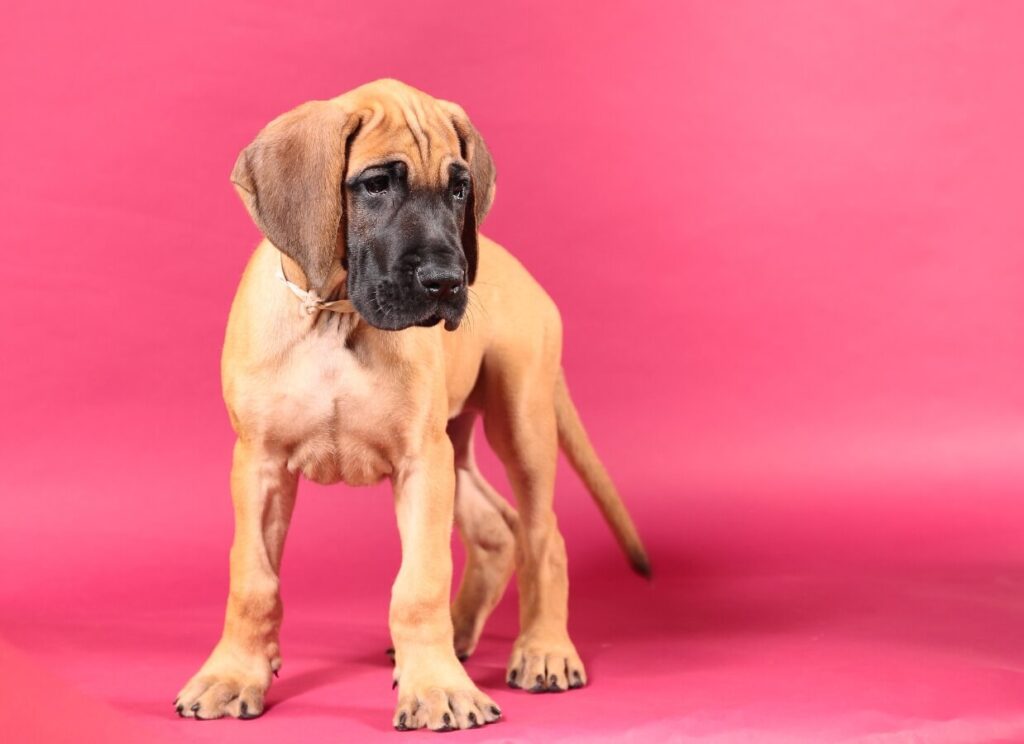
Your Great Dane Puppy is Full
Many times, a puppy that has no appetite is actually full!
For puppies, we recommend a loose free-feeding schedule. This means that you will offer food 3x/day, but allow your puppy to graze as well. If they finish a bowl, you may offer more as long as your puppy isn’t inclined to over-eat!
Too much nutrition can lead to knuckling and loose stools, so keep that in mind if your dog loves to scarf food and eat too much.
Great Dane puppies grow fast and need a lot of nutrition, and your dog’s eating habits will change often throughout the first several months. As a matter of fact, you may find that your puppy is at the food bowl asking for food at odd times, and turning its nose up at other times!
Your pup will need more dog food before and during a growth spurt as well.
We say feed them and let them guide you! The goal with puppies is not to stuff them with an exact number of cups of food, but rather to give them the nutrition they need to grow slowly and with excellent body condition.
Our Great Dane puppy feeding chart can give you a rough idea of how much you might expect to feed, but only your puppy really knows what he needs.
Do not let your puppy (or adult Great Dane) gain excess weight. If your dog scarves food down and eats without stopping, it’s time to step in and strictly monitor intake.
Is it normal for puppies to not eat all of their food
Assuming that your healthy puppy has a quality, age-appropriate science-backed dog food and is otherwise vibrant, robust, and active it can be perfectly normal for your pup to leave food in the bowl.
As above, this is not a sign that your Great Dane is one of the reported ‘picky eaters’. A dog that is self-regulating its intake is very different than a dog that has had an actual loss of appetite.
It’s important to monitor your puppy and keep tabs on growth, overall health, and energy levels; this matters more than actual food intake!
As a pet parent, it’s normal to worry, but unless your dog recently suffered illness, is losing weight, or is showing other sights of stress or health problems, try not to stress. Keep your puppy on the same dry dog food and stick it out!
Having interest change from meal to meal and day to day is totally normal and to be expected. This chart below is just a guide; the food you choose and your puppies appetite will change these amounts.
When should I worry about my puppy not eating?
Of course, there does come a time when you should worry about your puppy not eating!
You definitely want to see medical attention for your dog if it is losing weight, acting lethargic, distressed, or having difficulty chewing.
Sometimes a stick or bone has become lodged inside of the jaw and it can make it difficult for a puppy to eat and drink water normally.
If your dog’s stool has blood in it, you will need to see your vet immediately as this can be a sign of foreign bodies or Parvo. Pale gums, coughing, and dehydration are also indicators of physical distress that will require immediate veterinary care.
If your puppy ate something they shouldn’t have such as socks, jewelry, or toxic foods such as grapes or Xylitol you will likely notice a reduction in appetite.
These things are a medical emergency and cause for concern.
At times, excessive treats, table scraps, or stolen food from the counter can lead to a condition called Pancreatitis. This can make your puppy stop eating and show signs of nausea, tummy upset, and weakness.
However, if your puppy is bright, vibrant, and playful while awake with nice tight feet and a great nap schedule (remember, Great Dane puppies need a LOT of sleep!), chances are everything is fine. Let your puppy sleep, they will eat when they are hungry!
A healthy Great Dane pup should be curious, friendly, active, and ready to go when awake!
Bonus Tip: Monitor water intake when your dog won’t eat
We do not recommend limiting water intake or withholding water for ‘potty training’.
This dated practice can lead to dehydration and may actually teach your puppy to gulp, hoard, and guard water as a valuable resource.
Of course, a pup doesn’t need to be drinking water overnight. But if you are taking up the bowl at dinner time so you don’t have to let your puppy out to pee at 2 in the morning, stop.
Let your puppy drink water as needed and desired until you all go to bed for the night.
Take your puppy out for one last late-night pee (use LOTS of treats and yes, kibble to reward this behavior!) and then quietly, calmly go out as needed through the night.
They will outgrow the need to go out and pee overnight once their bladder is mature, and you’ll be getting restful sleep again!
What to do when your puppy isn’t eating?
Many people start adding wet dog food, boiled chicken, treats, canned food, or other tasty toppers to entice their puppy to eat.
Others will attempt hand feeding or hydrating the food in warm water. It’s important to remember that appetite in dogs can and will fluctuate!
Note: some studies show that food moistened in warm water, that has citric acid in the formulation may increase bloat risk.
As we mentioned before, bribery is a dangerous path that will lead to a lot of frustration.
We believe in offering up to 5-10% of the diet as healthy toppers because, for Great Danes, it may reduce bloat risk.
However, there is a big difference between adding healthy foods to increase the intake of fibers and omegas and adding unbalanced junk food to make the dry kibble somehow more appealing.
We recommend rehydrated Olewo carrots for loose stools.
Balanced raw, fish oil, the occasional raw egg, or a few scoops of Dr. Harvey’s are also welcome additions to the Great Dane food bowl!
As above, these items should be added for health reasons, not as bribery.
Best Foods for Great Danes & The Appropriate Diet
Once your puppy learns that skipping meals means you bring out the good stuff, all bets are off. We promise, that if you are feeding an appropriate dry food diet, you do NOT need to switch to a new food so that your dog will eat!
If you are feeding a science-backed, highly respected solid food that is formulated for the growth of large breed dogs, stick with the same food. We recommend choosing brands that invest heavily in research, professional veterinary nutritionist formulation, development, ingredient sourcing, and formula testing. These brands include Purina, Eukanuba, and Iams.
Scheduled Feedings to Reduce Pickiness
If your dog won’t eat and there are clearly no health issues, wait it out. Put the bowl down, offer the meal, and walk away. Don’t make a fuss.
Pick it up again if your dog refuses it after 15-30 minutes. Offer it again later for a mid-day meal, and repeat this process until your dog gives in and eats their solid food.
Another trick you can try when your dog won’t eat is to make eating FUN. Use your dog’s normal food as training treats, and reward your dog throughout the day with a few pieces for awesome behavior.
The KONG WOBBLER can also be very engaging for dogs that need their food to ‘run’ so they can hunt for and chase it! We always love seeing food used as enrichment. If your dog won’t eat, this is a great trick to try!
Reasons for the loss of appetite in dogs
Like puppies, there are many reasons why an adult Great Dane will have a loss of appetite.
Here are just a few things to look for if you have a dog not eating:
- A foreign body such as a sock in the digestive tract
- Stomach upset from eating something toxic or irritating, including chocolate, grapes, certain house plants, and xylitol
- Stomach upset from counter surfing things such as butter, roasts, cookies, or treats that are unbalanced, fatty, sugary, and sit heavy in the stomach (watch for signs of pancreatitis! See below).
- Toxicity from exposure to essential oils such as eucalyptus oil, tea tree oil, cinnamon, citrus, peppermint, pine, wintergreen, and ylang-ylang that are not safe for dogs
- Boredom. Like humans, bored dogs can become depressed, suppressed, and may turn their noses up at food. Make eating fun by using a puzzle feeder and food as training treats!
- Congenital problems such as heart or digestive system defects that haven’t been diagnosed
- Liver disease or kidney disease
- New food (switching too quickly can cause stomach upset, OR the new dog food has more nutrition and your dog won’t have to eat as much as they did with the previous food.
- Heart failure, including diet-induced DCM caused by poorly formulated diets
- Illness including pneumonia, Distemper, Parvo, and kennel cough
- Painful teeth and dental disease in your dog’s mouth from poor dental maintenance
- UTI
- Diabetes including uncontrolled high or low blood sugar
- Free feeding, which can cause dogs to become indifferent to mealtimes and working for their dry dog foods
- Counter surfing and too many table scraps
- Not hungry/has been overfed (common)
- Separation anxiety and stress
- Age. As your dog ages, its nutritional needs change. It may be time to switch to a science-backed senior formula, such as Pro Plan Adult 7+ Bright Mind Large Breed Chicken & Rice Formula.
A senior dog will have a reduced appetite and will require a different dry dog food formulation than a puppy or adult.Dental disease in senior dogs can also cause decreased appetite; your veterinarian can address this with you.
Some dogs with advanced dental disease may need canned food or a liquid diet.
Signs of pancreatitis in Great Danes
Here are some signs of pancreatitis, which is a life-threatening illness that can happen when dogs ingest too many things that are fatty such as too many rich treats, roasts, butter or bacon.
Scavenging for food is one of the leading predictors of a dog experiencing pancreatitis; however other things may cause it.
- Diarrhea
- Abdominal Pain
- Distress, including laying with the rear end high in the air
- Fever
- Lethargy
- Vomiting
- Decreased appetite
- Nausea
Pancreatitis in dogs has other factors and causes as well, and the prognosis is based on severity and treatment. If your dog is showing these or other symptoms that are alarming to you, it’s important to seek veterinary care as soon as possible.
Counter surfing and trash surfing is a real problem for Great Danes! Learn how to solve this dangerous and annoying behavior.
Your pet’s health is at risk if you don’t implement training and management.
Balanced training is the most humane choice for dogs because it teaches and rewards them while also giving them all of the information they need to make mature decisions. This includes NO, a simple thing that can save your dog’s life.
https://vcahospitals.com/know-your-pet/pancreatitis-in-dogs
My Great Dane is picky and won’t eat
A picky Great Dane dog with a decreased appetite is often caused by, get this, poor handling!
Biologically, dogs don’t want to starve. Let your dog’s eating habits be your guide here: many dogs are incredibly good at self-regulating intake, just by nature! Appetite in dogs is fluid and will change day-to-day, too.
If they don’t eat, it’s because they don’t need the food, have a medical problem, the food is bad, OR we’ve trained them to hold out for the good stuff. A dog not eating because they’ve learned this is a dog that is making the rules.
That last part…read it again.
We’ve trained them to hold out for the good stuff, and they’ve trained us to give it to them!
Every time you add toppers or change foods to encourage your Dane to eat, you teach them that if they turn their nose up at the food bowl better things will come. A dog not eating may actually be a dog that figured out a neat trick to eat treats with every meal.
If you’ve ruled out medical problems and you are feeding a fresh (not stale) high-quality, science-backed kibble that is correctly formulated for your Great Dane, chances are your Dane is either full or totally playing you.
Now of course it stands to reason that your Great Dane may get tired and bored of a certain food. We recommend changing proteins on occasion but stick with the food that is working for you.
When you change proteins, stick with the same formula
Example for an adult dog:
Purina Pro Plan Large Breed Chicken and Rice, switch to Purina Pro Plan Large Breed Beef and Ric
Are Great Danes picky eaters?
By nature, Great Danes are not picky eaters!
However, the myriad of health problems that plague this breed resulting from bad genetics and incorrect foods can make them seem picky or intolerant of certain foods.
Great Danes are unfortunately prone to a number of health issues that can result in a dog’s loss of interest in food.
When a dog won’t eat or flat out refuses, it might be helpful to rule out these common health issues:
- Heart problems, including Dilated Cardiomyopathy. Great Danes are prone to DCM and it can be made worse or triggered for Danes that are fed an incorrect unbalanced diet.
- Allergies. While dietary allergies are actually extremely rare, environmental allergies can make a dog uncomfortable.
- Thyroid disorders.
- Diabetes
- Painful orthopedic problems including wobblers, HOD, Dysplasia or arthritis
- Poor structural conformation that leads to painful joints and movement
Chances are, your Great Dane is not actually picky and other things are going on.
If you think it’s just general pickiness, wait it out! You might be surprised to find that your dog starts eating again after a day. If not, seek medical advice just in case.
When should I be concerned that my dog is not eating?
Anytime your dog’s appetite seems to have decreased drastically, you will want to watch for other signs and symptoms. A loss of appetite in dogs can be alarming, and it’s good that you are paying attention!
A dog that normally loves its dry dog food and that is suddenly refusing food of any kind may have medical problems that go far beyond a simple loss of appetite.
If your dog stops eating altogether and you aren’t sure why we recommend seeking professional help from your veterinarian before switching foods again.
Older dogs that stop eating
Older dogs that are not eating and that have other health problems may be towards the end of life; just like humans, a dog in hospice will often experience a loss of appetite and stop eating before passing away.
It is important to keep senior dogs in hospice staying hydrated, drinking water, and being as comfortable as possible!
A dog’s loss of appetite in the latest days of life is normal and may be an indication that it’s time to say goodbye.
Did you know that there are now canine hospice options? Chat with your veterinarian for referrals and advice. They can help guide you towards making sure that your elderly dog is drinking water and staying hydrated before you have to make any other end-of-life decisions.
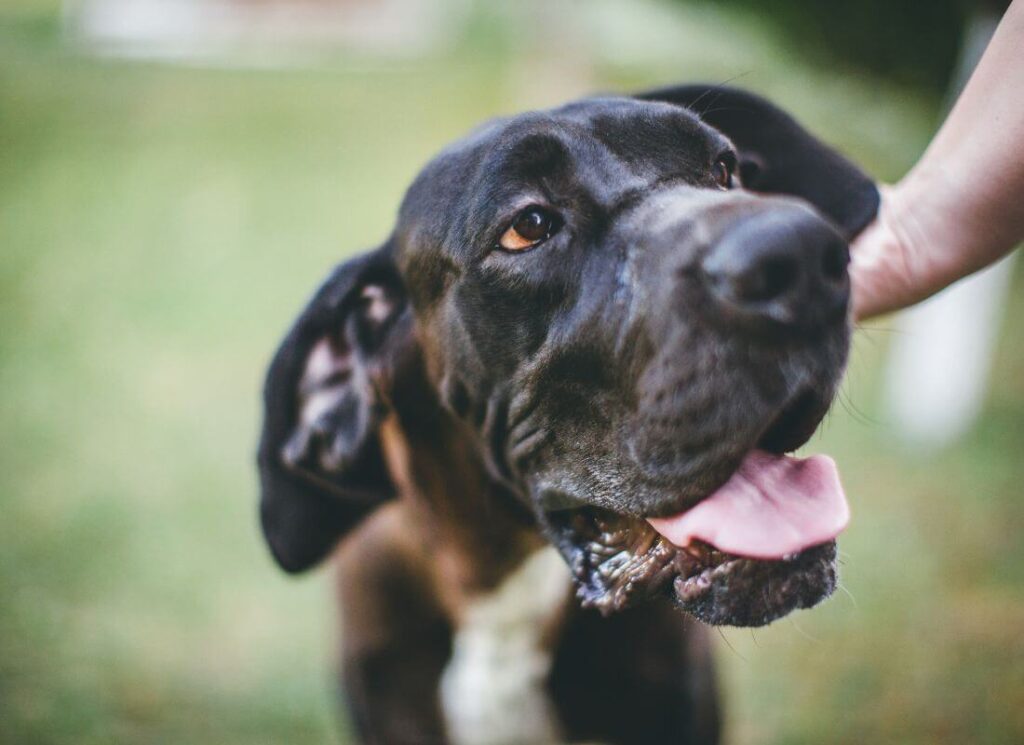
How do I make my Great Dane eat more?
In most cases, you don’t actually need your Great Dane to eat more!
Many people are alarmed to see how ‘thin’ their Great Dane is. The truth here is that a little rib showing is normal and desired. Very few dogs are actually underweight, and very few dogs actually need to eat more.
The written breed standard for Great Danes in all Countries, including Europe and the U.S. defines them as being an athletic breed, never stocky.
For truly underweight dogs that need more nutrition, medical attention is needed first to rule out underlying causes such as disease, parasites, cancer, or congenital deformities such as megaesophagus.
Great Dane puppies in particular can be very lean and lanky as they grow. They will fill out once they are more mature, usually between 2 and 3 years of age.
Here is an image of three Great Dane dogs. One is underweight and malnourished. One is at a perfectly healthy weight. The third is overweight.
A malnourished, underweight dog will lack vibrancy and won’t have much energy. Many ‘thin’ dogs that are labeled as ‘underweight’ have shiny coats, muscle tone and lots of energy! Those dogs need to be left as-is.
Adding weight to a Great Dane is hard on the joints and can shorten the life span by 2 years, on average. For giant breed dogs that tend to have short lifespans in the first place, that is devastating.
If you think your dog is underweight and needs to eat more, talk to your vet first! Most people are so used to seeing ‘fat’ dogs that they don’t know what an appropriate waistline is on a dog.
A lot of ‘thin’ dogs can actually use some muscle building as well. Muscle and activity will nearly always come with an increased appetite, as the added nutrients are needed to build muscle.
We highly recommend that all Great Danes are off-leash trained and have the opportunity to move, explore, run and play freely without physical restraints such as harnesses, head collars, prong collars, or long leashes.
These natural activities help them build muscle and can improve balance, strength, and motor coordination. For off-leash training, modern E-Collars cannot be beat. We have tons of resources on this topic here.
When should I worry about my dog not eating?
If your dog is acting lethargic, it’s time to worry.
A dog that has no energy, dull eyes or that is weak needs medical assistance.
Muscle wasting is a problem for dogs that have begun to lose weight due to a too-low intake of food. Without the nutrition or fat reserves needed for survival, muscle tone will diminish.
Some dogs may be coming from rescue situations where severe neglect led them down this path.
A veterinarian can advise on the best course of action for food intake, water intake, and nutrition in dogs that are severely underweight. A new food will typically be advised, as there are certain dry dog food formulas that have more of the kind of nutrition a dog like this will need to rebuild their strength.
Some healthy dogs may eat less and begin to lose weight. This can be concerning to dog owners, especially when it’s clear that the dog’s appetite has changed or been reduced.
Many dogs are actually overweight, and a heavy dog not eating as much of their normal food may actually be a good thing. For those dogs, they may appear to look ‘too thin’ because their new body condition looks different, but it doesn’t mean that you need to be alarmed.
Always chat with your veterinarian to rule out health problems, including cancer, diabetes, thyroid issues, and heart problems if your dog’s appetite seems unusually different.
Is it normal for a dog to not finish their food?
It is very normal for a dog to not finish its food! If your dog won’t eat the entire bowl, consider that it could just be a matter of ‘too much’.
Think about how this applies in the wild. A dog is naturally inclined to not overeat because instinctually dogs know how much nutrition their body actually needs.
In most cases, we recommend trusting your dog here. If your Great Dane is eating but doesn’t finish their food, they are probably full and don’t need anymore!
Is your Great Dane at a healthy weight? Read more here.
Many people worry about food because they are concerned about bloat. They want their dog to eat on a schedule so that they can strictly monitor meal and rest times.
It’s important to understand that rest is not actually proven or reliable as a bloat preventative. Most cases of bloat happen in the middle of the night, 2-3 hours after meals, or while a dog is resting.
There are definitely much bigger things to be concerned about when it comes to bloat risk and minimizing the chance that your dog experiences it.
Genetics, gut health, and poor temperaments are key factors. For more information on bloat in Great Danes and how it relates to nutrition, read our Great Dane Bloat articles below.
If your dog has no aggression, food-scarfing, hoarding, training, or temperament issues it’s actually fine to allow your dog to graze on the food they leave in the bowl. As a matter of fact, frequent, smaller meals are correlated with a DECREASE in bloat risk!
If your dog is overweight, obese, frantic, aggressive, frustrated, or needs a lot of training, however, this is not recommended. For those dogs, 2-3 scheduled meals per day, served in a low-stress environment for just 15-20 minutes is ideal.
Monitoring your dog’s body condition is extremely important, and avoiding food scarfing, fights over food, and frustrating behaviors at the bowl is part of being an educated, dedicated Great Dane owner.
You know your dog best!
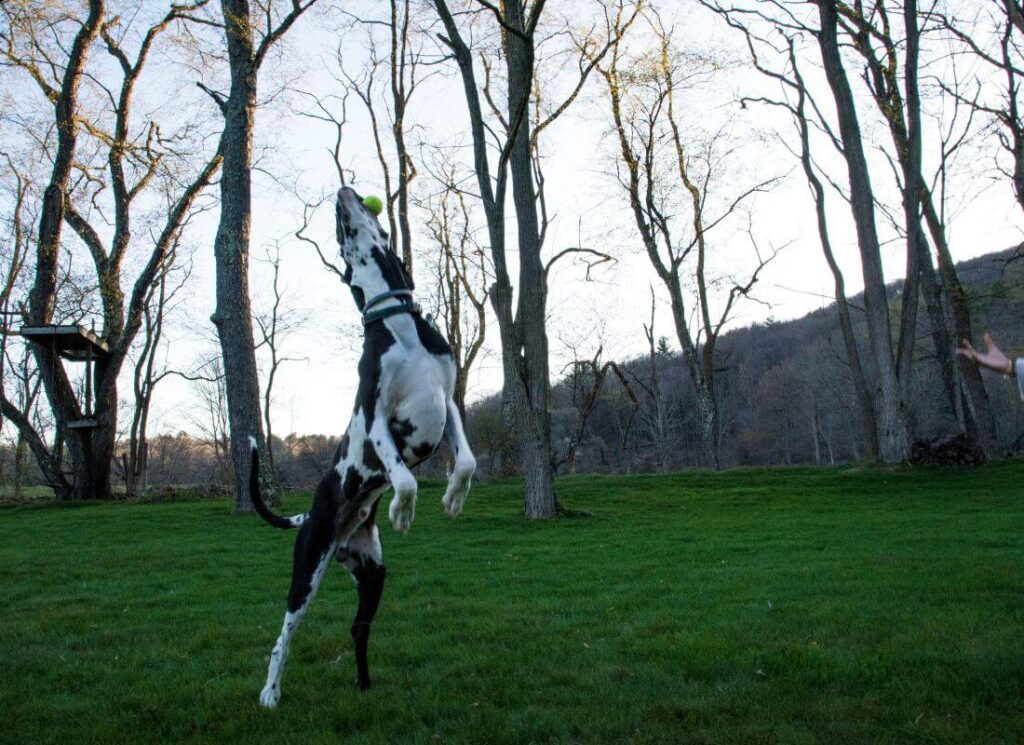
The case of too many treats
Many dogs are full and uninterested in food because they are getting too many treats!
Treats may be coming from cute puppy eyes at the treat jar, table scraps, bones, chews, table surfing, and yes, even your treat bag during training.
If you are working on training your Great Dane, try mixing some of your dog’s dry food ration for the day into your treat bag.
Use food as a reward so your dog receives correct, balanced nutrition and gains confidence doing a job well done.
Not only will this make their food more enticing because they have to ‘work for it’, but the variation of treats between high value (such as Ziwi Peak) and their kibble will work to make your dog that much more interested in working for the good stuff.
Every time they get a higher-value treat, it’s like hitting the jackpot!
As a matter of fact, some of the best dog trainers use two-treat bags on their belts for this very reason. One is full of the dog’s kibble, and the other is full of higher-value treats.
When training, use dry food from your dog’s normal daily ration and the smallest treats you can find from the list below.
We recommend the following high-value dog treats for training Great Danes!
- Ziwi Peak
- Zuke’s
- Pupford Freeze Dried Training Treats
- Blueberries
- Freeze-dried meats and organs (small amounts, don’t overdo it)
- Cheerios
- A trail mix made up of hotdogs, dry food, Ziwi peak, blueberries, and freeze-dried chicken
When your dog is eating dry food as a reward during training, you will find that your dog starts to really enjoy their meals! By nature, dogs want to ‘work’ and that includes hunting, searching, sniffing, sitting, and doing tricks.
As a matter of fact, a lot of behavior problems in Great Danes including destruction, chewing, separation anxiety, anxiety, lunging, barking, and pulling like a freight train are directly related to, get this, frustration and BOREDOM!
When we ask our dogs to work for their dry food, we are providing them with enrichment and mental games that will help them thrive.
Does your dog turn its nose up at kibble when used as a training treat? Make it a little more ‘enticing’ by spraying it with bone broth or warm water and as above, mixing it up with higher value treats.
PRO TIP: If you use hot dogs, the kibble will naturally become more appealing because the hot dogs will ‘scent’ the kibble in the treat bag!
If your dog likes to eat treats but not their normal food, you can also ‘trick’ them into thinking their dry food is a treat by using it as a filler for fun puzzle toys such as the West Paw Topple.
We believe Great Danes should have fun with their food, and that a dog’s appetite is often linked to how hard it was for them to get that food.
Sometimes it really is a matter of making a dog eat through the use of brain games and puzzles.
Is your dog not eating it’s dry food? Try the West Paw Puzzle toy!
What if my dog has separation anxiety?
If your dog is not ok when you leave the house, you can actually use their meals, canned food, and dry food to your advantage!
We recommend creating a mixture of kibble, wet food, rehydrated Olewo carrots and a few high-value tidbits such as Dr. Harvey’s freeze-dried treats or Ziwi Peak.
Take this mush and stuff it into a Dane-sized West Paw Wobbler and stick it in the freezer!
Offer this frozen treat to your dog while they are in another room and confined away from you. Practice this daily, so your dog learns that you being in a different room and out of sight is ok!
They will enjoy the wet food as they work to get it out of the stuffed toy, and with practice, they will begin to have positive associations when you are away. You can make this puzzle even more enticing with the addition of canned food, something that many dogs love.
Separation anxiety is unhealthy for Great Danes and can increase their risk of experiencing bloat. Anxiety and stress have strong ties to bloat occurring!
It’s important to take steps to work on it, but it does take time and patience. If your dog won’t eat or work on the puzzle toy during these short practice sessions, lower the criteria. Leave for only 10 seconds, then 45, and so on.
The more time your dog can spend having a positive, no-stress experience with you out of site, the better.
What to give my dog if she is not eating?
The last thing you want to do is to bribe your Great Dane into eating.
A healthy, normal dog will not allow itself to starve to death! Decreased appetite in dogs happens for many reasons and many times the reason is both simple and benign.
It’s important to rule out medical reasons for reduced appetite in dogs such as parasites, pain, foreign objects or cancer, however!
If your Great Dane is not eating because of illness, your veterinarian may be able to offer an appetite stimulant in addition to treatment that will get your pup well again.
Canned food is highly palatable and many dogs experiencing a loss of appetite associated with illness will benefit from it.
Sick dogs need extra support: in this case, your veterinarian will advise you on an appropriate diet for your dog while healing. Dehydration is one of the biggest dangers for dogs that are not eating or drinking water.
You can encourage your Great Dane to drink water by adding a little bone broth or Nulo hydrator to make it more palatable. (Have you ever had a cold where water just didn’t taste good but you could chug orange juice? This happens in dogs, too!).
Cottage cheese, boiled bland chicken and rice, bone-broth, commercially available re-hydrators (such as NULO), hand-feeding, canned food, or a prescription liquid diet may be advised.
However, if you’ve determined that your dog is healthy, there are things you can do to encourage eating that will also benefit overall health!
We recommend the following options as toppers for kibble:
Rehydrated Olewo Carrots
This is the best remedy for loose stools and tummy upset! Not only that, but the added fiber may help reduce bloat risk.
For an adult Dane, measure 2 TBSP of dehydrated pellets and rehydrate in warm water before serving. You can use this mixture as stuffing for food puzzles or toys or as a mix-in or topper for kibble.
Dr. Harvey’s
Dr. Harvey’s food mixes contain dehydrated whole food ingredients such as oats, carrots, spinach, and blueberries. There are several options to choose from and dogs LOVE them!
Rehydrate a scoop with water and serve on top of your dog’s kibble as a way to encourage and entice eating. Remember to keep toppers, especially unbalanced ones to less than 10% of the diet.
Egg – any style!
It’s ok to occasionally offer eggs to your Great Dane. Raw is fine! Most dogs also love receiving a whole shell-on hardboiled egg that they have to open themselves. Scrambled eggs, poached eggs or sunny side up are fine as well, just make sure they are cool before serving.
We recommend offering no more than 1-2 eggs per week to Great Danes, unless part of a fully balanced and appropriately formulated raw diet.
Canned Food
Dogs love canned food. We recommend introducing canned food toppers slowly and using the same brand and formula as your kibble.
For example, an excellent pairing is Purina Pro Plan Large Breed paired with Purina Pro Plan Large Breed canned wet food.
(Note, most wet dog food is not recommended for growing Great Dane puppies, as it may not be formulated correctly for growth, only maintenance.
Always check the label! If you offer canned food to your Great Dane puppy, do so in moderation or look for an appropriate, science-backed formula that is appropriate for the growth of large breed dogs).
What if my dog won’t eat and is acting strange?
If your dog is acting strange, has had a loss of appetite, and seems unwilling to eat, it may be experiencing a medical emergency.
A Great Dane that is acting strange may be stumbling, pacing, foaming, crying, whining, shaking, hiding or unable or unwilling to get up. A dog won’t eat if they are in distress.
BLOAT in Great Danes is life-threatening and unfortunately common. If you see any of the following symptoms, it is imperative that you seek emergency care. This is true EVEN IF your Great Dane has had its stomach tacked!
- Attempting to vomit
- Pacing, whining, crying, and acting distressed
- Distended abdomen
- Foaming at the mouth
- Excessive drool
- Looking at the stomach area
- Collapse
A dog may also act strange if they have ingested toxins or poisons, gotten into a fight with other dogs (internal injuries), or if they are in pain and have other symptoms such as shaking, coughing, excessive panting, or seizures.
It’s always worth getting checked out and not ever assuming that your dog’s decreased appetite is related simply to food.
Liver disease, kidney disease, dental disease, and even heart disease can be ‘silent’ before they are deadly.
Great Danes are prone to DCM, a devastating and often silent killer. It is believed that DCM can be also be caused by poorly formulated dog dry food or homemade diets; for more information on the grain-free and boutique diet debate, read here.
Dog food journaling
Some dog owners find it helpful to keep a journal or notebook that documents health from week to week and year to year. This practice will be insanely helpful to your veterinarian, too!
If you notice a decreased appetite in your dog who is otherwise acting normal, start documenting their daily intake of food, treats and water.
You can also take note of body condition, activity levels, and any unusual gain or loss of appetite.
Are you having a problem with a dog not eating, but still unsure if you are doing the right thing or not? We always recommend seeking veterinary care when you aren’t sure about what is going on with your dog.
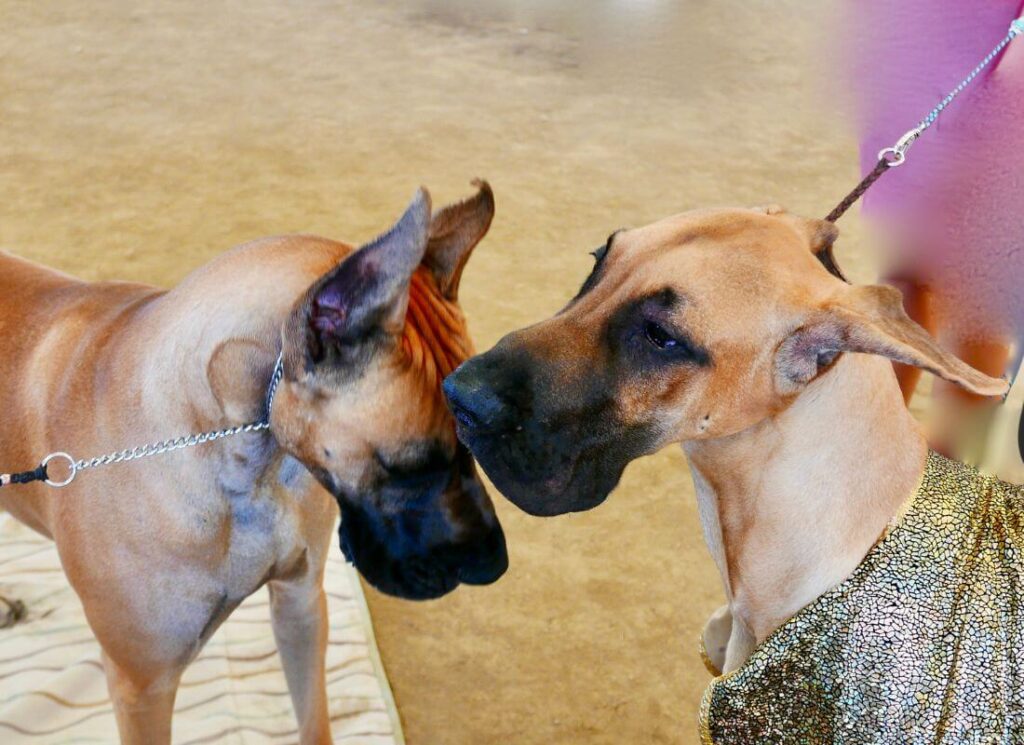

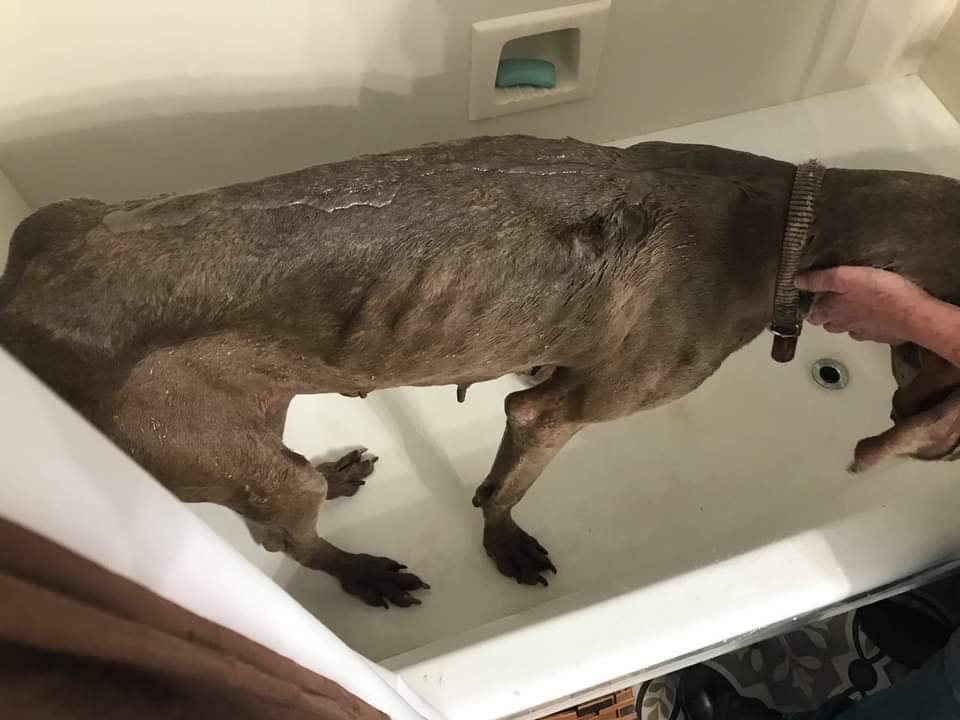
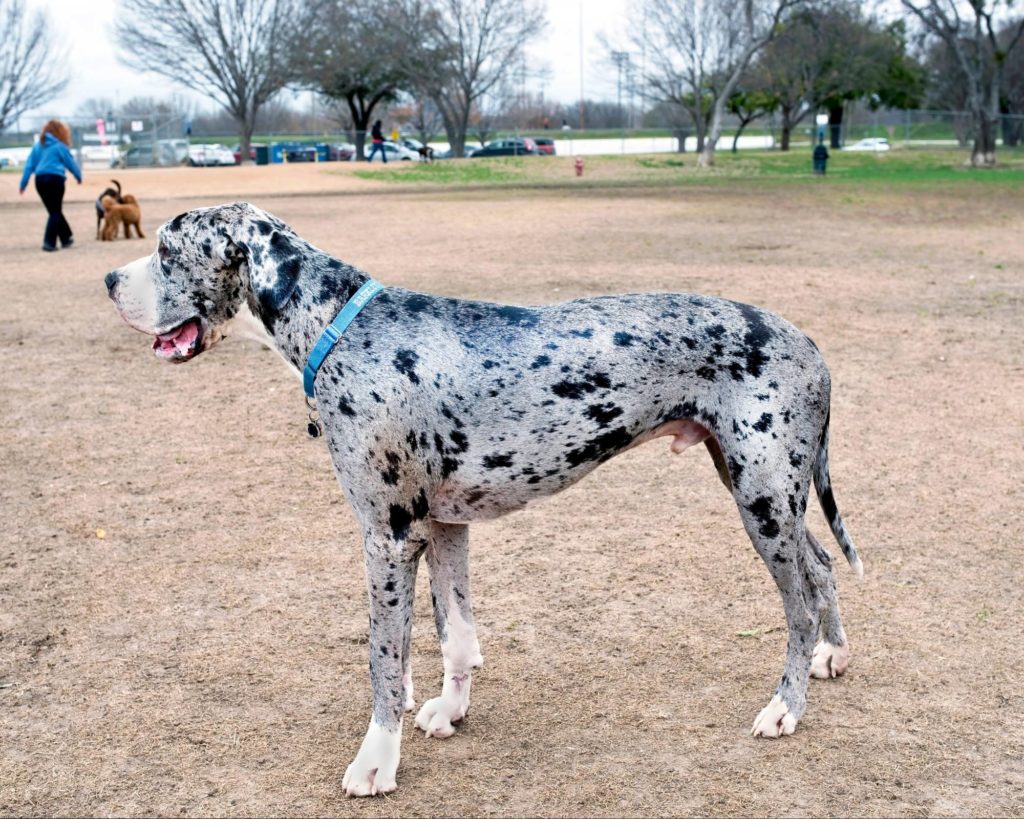
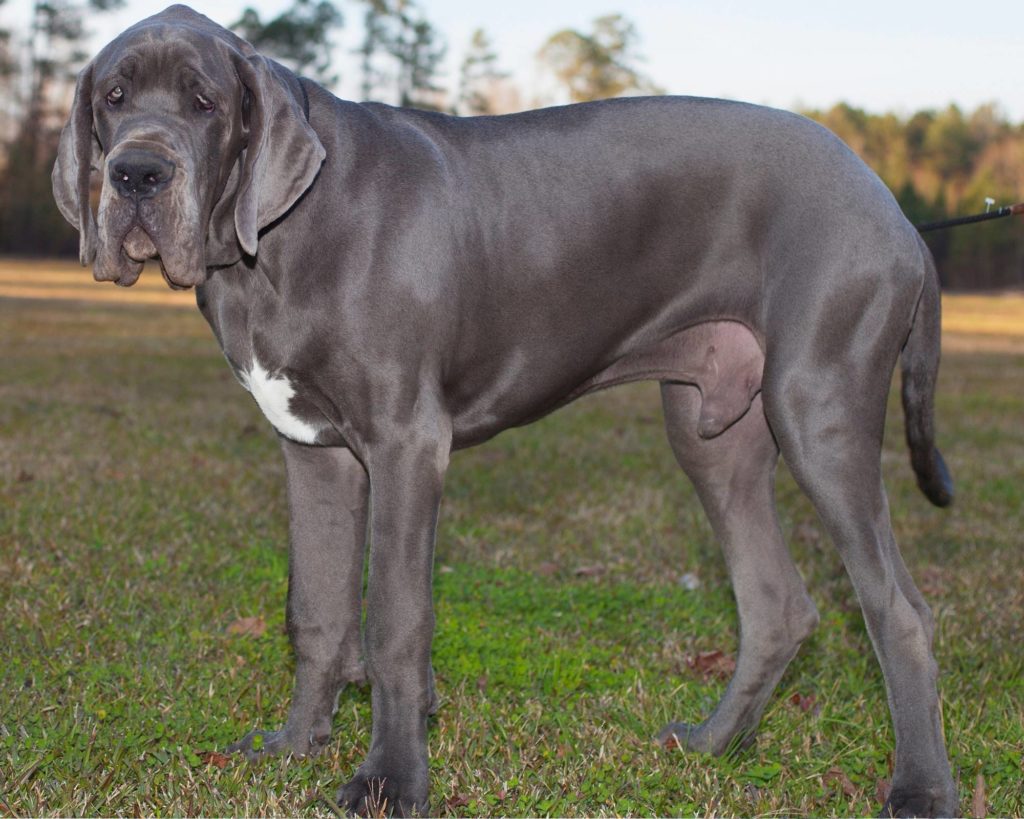
Leave a Reply